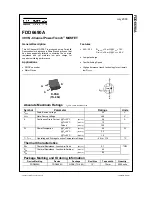
OPTIMOD-AM DIGITAL
TROUBLESHOOTING
5-3
deed, some transmitters cannot handle asymmetrical positive peaks without com-
pression even with good tubes, Never try to run these transmitters with asymmetry.
Audible Noise on Air
(See also “RFI, Hums, Clicks, or Buzzes” on page 5-1.)
Excessive compression will always exaggerate noise in the source material. The 9300
has two systems that fight this problem.
1. The
compressor gate
freezes the gain of the AGC and compressor systems when-
ever the input noise drops below a level set by the threshold control for the process-
ing section in question, preventing noise below this level from being further in-
creased. There are two independent compressor gate circuits in the 9300. The first
affects the AGC, while the second affects the Multiband Compressor. Each has its
own independent threshold control. (See
M
B
G
ATE
2. The
dynamic single-ended noise reduction
(see
D
WNEXP
T
HR
on page 3-33) can be
used to reduce the level of the noise below the level at which it appears at the in-
put.
If you are using the 9300's analog input, the overall noise performance of the sys-
tem is usually limited by the overload-to-noise ratio of the analog-to-digital con-
verter used by the 9300 to digitize the input. (This ratio is better than 108 dB.) It is
important to drive the 9300 with professional levels (more than 0 dBu reference lev-
el) to achieve adequately low noise. (Clipping occurs at +27 dBu.)
The 9300's AES3 input is capable of receiving words of up to 24 bits. A 24-bit word
has a dynamic range of approximately 144 dB. The 9300's digital input will thus nev-
er limit the unit's noise performance even with very high amounts of compression.
If an analog studio-to-transmitter link (STL) is used to pass unprocessed audio to the
9300, the STL's noise level can severely limit the overall noise performance of the
system because compression in the 9300 can exaggerate the STL noise. For example,
the overload-to-noise ratio of a typical analog microwave STL may only be 70-75 dB.
In this case, it is wise to use the Orban 6300 Studio AGC to perform the AGC func-
tion prior to the STL transmitter and to control the STL's peak modulation. This will
optimize the signal-to-noise ratio of the entire transmission system. An uncom-
pressed digital STL will perform much better than any analog STL. (See
Studio-
Transmitter Link,
Shrill, Harsh Sound
This problem can be caused by excessively high settings of the HF EQ control It can
also be caused (or at least exaggerated) by a transmitter with substantial distortion,
particularly at higher modulating frequencies
Audible Lowpass Filter Ringing
If you have set the system’s lowpass filter cutoff frequency at 5 or 6 kHz, you may
hear the filter ring audibly on some radios. This is an inevitable side effect of filter-
ing that is selective enough to protect the RF channel to various government stan-
dards.
Summary of Contents for OPTIMOD-AM 9300
Page 1: ...Operating Manual OPTIMOD AM 9300 Digital Audio Processor Version 2 0 Software...
Page 7: ...Operating Manual OPTIMOD AM 9300 Digital Audio Processor Version 2 0 Software...
Page 178: ...3 46 OPERATION ORBAN MODEL 9300...
Page 200: ......
Page 221: ...OPTIMOD AM DIGITAL TECHNICAL DATA 6 21...
Page 222: ...6 22 TECHNICAL DATA ORBAN MODEL 9300 CONTROL BOARD PARTS LOCATOR...
Page 228: ...6 28 TECHNICAL DATA ORBAN MODEL 9300...
Page 229: ...OPTIMOD AM DIGITAL TECHNICAL DATA 6 29 I O DSP BOARD LEFT AND RIGHT ANALOG INPUTS...
Page 230: ...6 30 TECHNICAL DATA ORBAN MODEL 9300 I O DSP BOARD ANALOG OUTPUTS...
Page 231: ...OPTIMOD AM DIGITAL TECHNICAL DATA 6 31...
Page 238: ...6 38 TECHNICAL DATA ORBAN MODEL 9300 FRONT VIEW REAR VIEW FRONT PANEL PARTS LOCATOR DIAGRAM...
















































